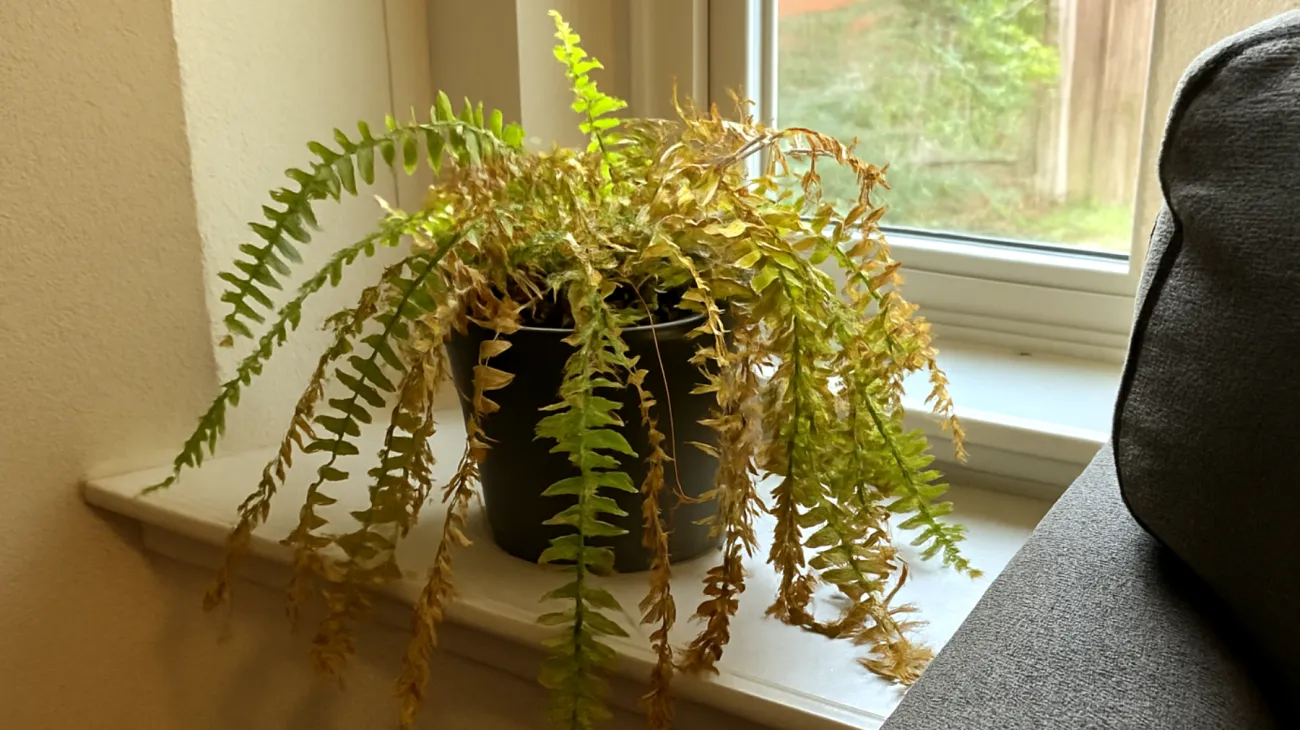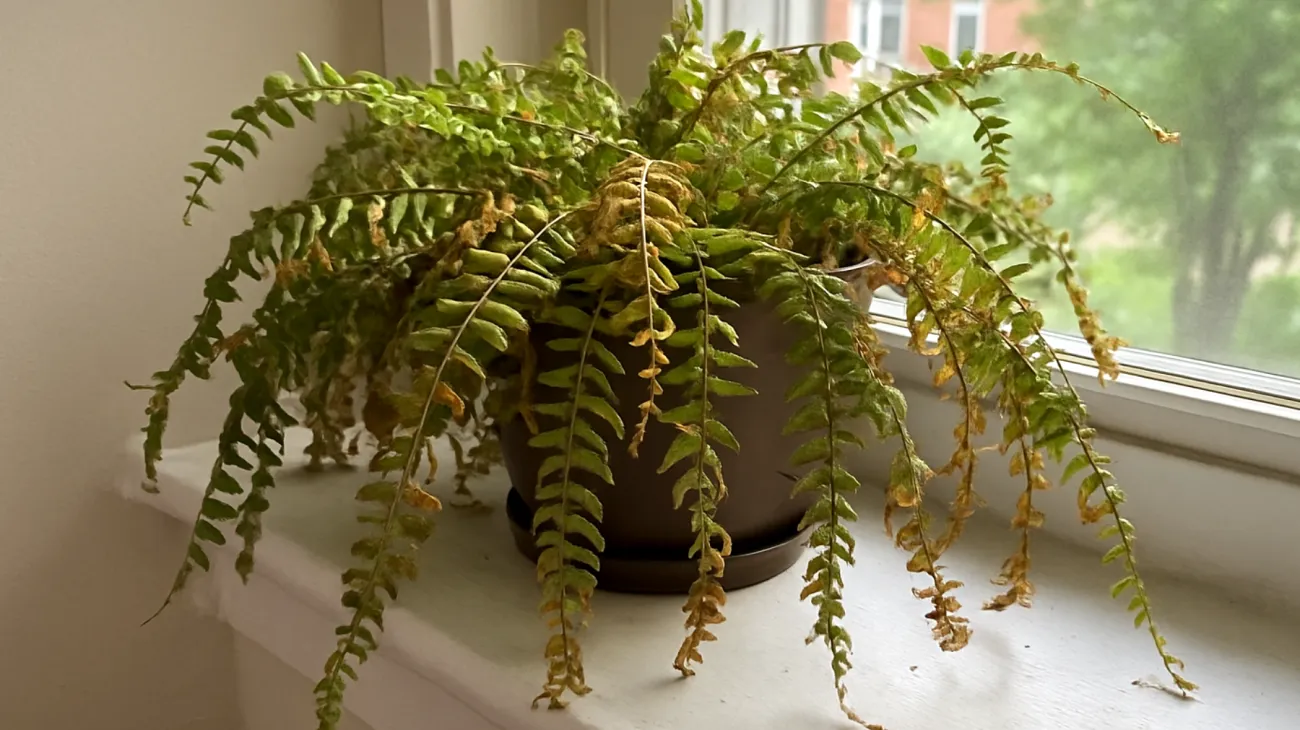The Science Behind Environmental Stress in Tropical Ferns
The lush, feathery foliage of the Boston fern has made it a beloved houseplant for over a century, but those crispy brown tips and drooping fronds aren’t signs of a dying plant—they’re urgent messages from a species that demands very specific conditions. These symptoms represent a complex interplay of environmental factors that, when understood properly, can be addressed to restore your fern’s natural vigor.
Native to humid subtropical and tropical forests, Boston ferns evolved in filtered light and consistently humid air—conditions vastly different from your typical heated apartment or air-conditioned office. When frond tips develop brown-tipped fronds, the culprit is usually environmental stress, but the mechanisms behind this damage are more complex than simple neglect.
Most indoor environments are far too dry for Boston ferns to thrive. Indoor humidity levels can plummet below 30% in winter, especially near radiators or vents, while Boston ferns require levels above 50% to maintain optimal cellular function. The browning process begins at the molecular level, where cells at frond tips—the most actively growing portions—begin to desiccate when water loss exceeds the plant’s ability to absorb and transport moisture.
Three silent enemies typically contribute to this cascade of stress responses. Low humidity remains invisible until damage appears, making it particularly insidious. Over- or under-watering compounds these issues because ferns require consistently moist soil to maintain proper nutrient transport. Heat sources and excessive airflow intensify dehydration by increasing water loss beyond the plant’s adaptive capacity.
Understanding Light and Water Requirements
The relationship between light exposure and fern health extends far beyond simple brightness preferences. Boston ferns prefer what’s called bright, indirect light—the kind they receive beneath a tree canopy in their natural habitat. Direct sun scorches their fronds through a process where excessive light energy overwhelms the plant’s photosynthetic machinery, causing irreversible damage that can take months to recover from.
Many Boston fern owners assume weekly watering schedules provide adequate moisture, but this rigid approach often contributes to plant decline. The goal is to keep the soil evenly moist, not wet or bone-dry. The top inch should feel damp but not soggy, and good drainage emerges as critical because Boston ferns hate sitting in stagnant water.
Boston fern roots concentrate in the upper soil layers where they can efficiently access both moisture and oxygen. This shallow root system makes them particularly vulnerable to both drought stress and waterlogging, explaining why they’re so finicky about watering practices.
Advanced Humidity Management
While regular misting feels intuitive, it provides only temporary relief and can sometimes create conditions favorable for fungal problems. More effective approaches focus on maintaining stable humidity levels rather than temporary moisture spikes.
- Room humidifiers represent the most reliable long-term solution, with cool-mist models effectively maintaining 50–60% relative humidity
- Pebble trays with water create humid microzones through continuous evaporation when properly constructed with the pot elevated above water level
These methods work by understanding how plants actually interact with atmospheric moisture, creating the consistent environmental conditions that Boston ferns require for optimal health.

Nutritional Needs and Environmental Stressors
Brown-tipped fronds aren’t solely caused by humidity and watering issues—sometimes the problem lies in soil chemistry and nutrient availability. Boston ferns have specific mineral requirements that differ from typical houseplant fertilizer recommendations. These plants require water-soluble, balanced fertilizer at half strength every 4–6 weeks during the growing season, with lower nitrogen levels than most tropical houseplants while needing higher potassium levels.
Pot size plays a crucial role in plant health. Boston ferns develop extensive but shallow root systems that can quickly outgrow their containers. When roots become crowded, water and nutrient uptake efficiency drops dramatically, leading to stress symptoms that manifest first in frond tips.
Even when basic care requirements are met, subtler stressors can undermine fern health. Boston ferns are surprisingly sensitive to common household pollutants, making them excellent indicators of indoor environmental health. Cleaning sprays and drying agents that aerosolize near plants can cause immediate cellular damage, while volatile organic compounds from furniture and carpeting create ongoing stress that accumulates over time.
Temperature stability proves more critical than many realize. Boston ferns dislike temperatures below 60°F because their cellular processes evolved in consistently warm environments. Even brief cold exposure can disrupt normal function, leading to rapid frond drop as the plant redirects energy to survival.
Integrated Care Strategies
The most successful Boston fern care approaches address interconnected environmental factors rather than treating symptoms in isolation. Beyond their aesthetic appeal, these plants actively trap dust and airborne pollutants, improving indoor air quality when maintained under optimal conditions.
- Maintain humidity above 50% consistently using humidifiers or pebble trays
- Water deeply when the top inch of soil dries, ensuring excellent drainage
- Provide bright, indirect light away from heat sources and direct sun
- Feed during active growing seasons while monitoring for salt buildup
- Flush soil every 2–3 months to prevent mineral accumulation
Regular soil flushing prevents salt buildup that can cause hidden stress symptoms, while repotting only when truly root-bound avoids transplant shock that can set back growth for months. These practices reflect an understanding of how fern biology actually works rather than generic houseplant advice.
Boston ferns reward scientifically informed care with vibrant greenery that actively improves indoor environmental quality. When fronds develop crispy tips or suddenly drop, they’re providing measurable feedback about environmental conditions. Properly interpreted, these signals point to manageable changes that can reconnect this elegant tropical species with the precise conditions it needs to flourish. Done right, your Boston fern becomes more than decoration—it’s a living air quality monitor and a testament to how plants respond to evidence-based care.
Table of Contents

